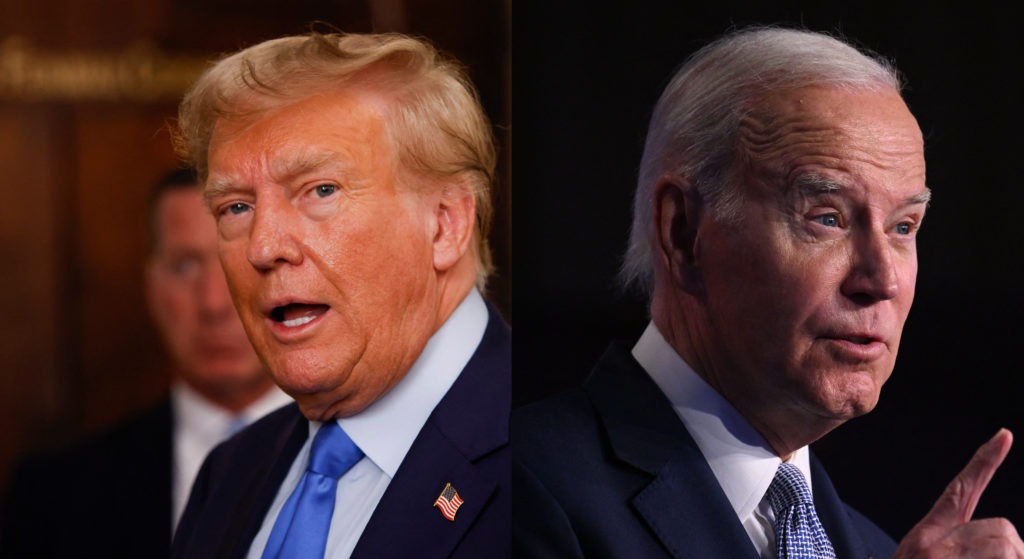On Super Tuesday, voters across 15 states and a territory confirmed what many anticipated: Donald Trump and Joe Biden will face off again in the presidential election.
Amidst this predictable outcome, an interesting contender emerged: the “None of the Above” option, which garnered significant support, particularly in Nevada, where it has been a choice since 1976. This option outperformed all listed candidates in the Nevada Republican primary, highlighting a solid undercurrent of voter dissatisfaction.
Nikki Haley, Trump’s primary Republican challenger, withdrew from the race the following day, emphasizing the strength of the “None of the Above” vote. This choice allows voters to express their discontent more clearly than simply abstaining from voting, offering a direct commentary on the candidates presented.
Biden-Trump Rematch (Credits: Bloomberg)
The presence of “None of the Above” on ballots and similar options like “uncommitted” or “no preference” in various states reflects a broader desire among voters for more expressive voting methods.
These options are particularly telling in a race featuring two highly polarizing figures, providing a means for voters to signal their dissatisfaction with the political establishment or the candidate selection.
This year, the option’s popularity underscored the public’s frustration with domestic policies and significantly with foreign policy decisions, notably Biden’s handling of international conflicts. The “Listen to Michigan” campaign successfully rallied a substantial “uncommitted” vote in Michigan, highlighting specific foreign policy grievances.
Various states employ different labels and rules for these protest votes, each telling its own story about voter sentiment. For example, Virginia’s support for Marianne Williamson was a de facto protest vote against Biden’s foreign policy.
Biden VS Trump (Credits: PBS)
Electoral reform activists often champion alternatives like ranked choice voting to address voter dissatisfaction. Yet, the “None of the Above” option uniquely captures those seeking to protest their discontent with the current political landscape directly.
Research indicates this option can increase electoral participation and shift votes away from non-establishment candidates, suggesting its significance in understanding voter motives and discontent.
As the election season progresses, the attention to “None of the Above” and similar options across various states illustrates a significant portion of the electorate’s desire for more expressive and satisfactory voting mechanisms.
This sentiment, capturing a mix of protest motives and dissatisfaction with political choices, underlines the evolving dynamics of voter engagement and the ongoing conversation about electoral reform.
